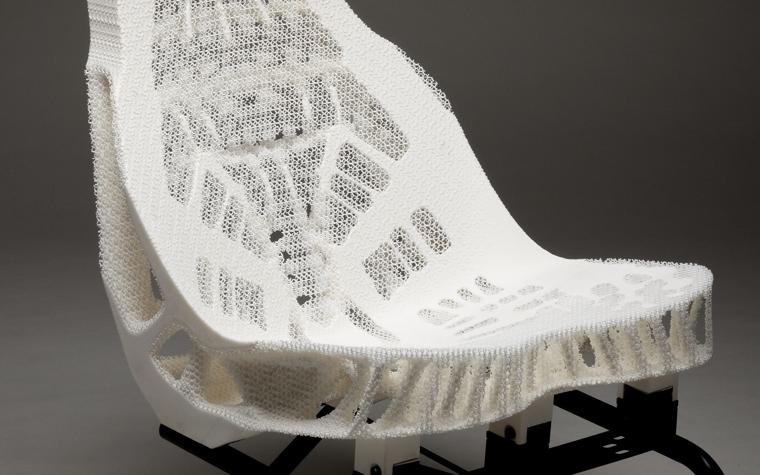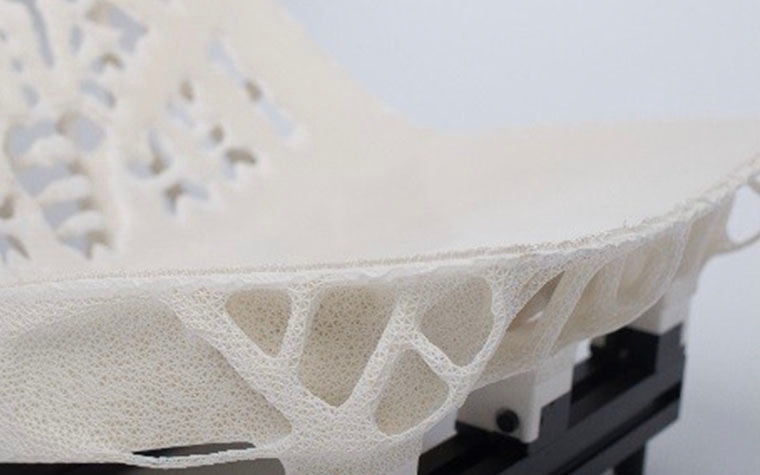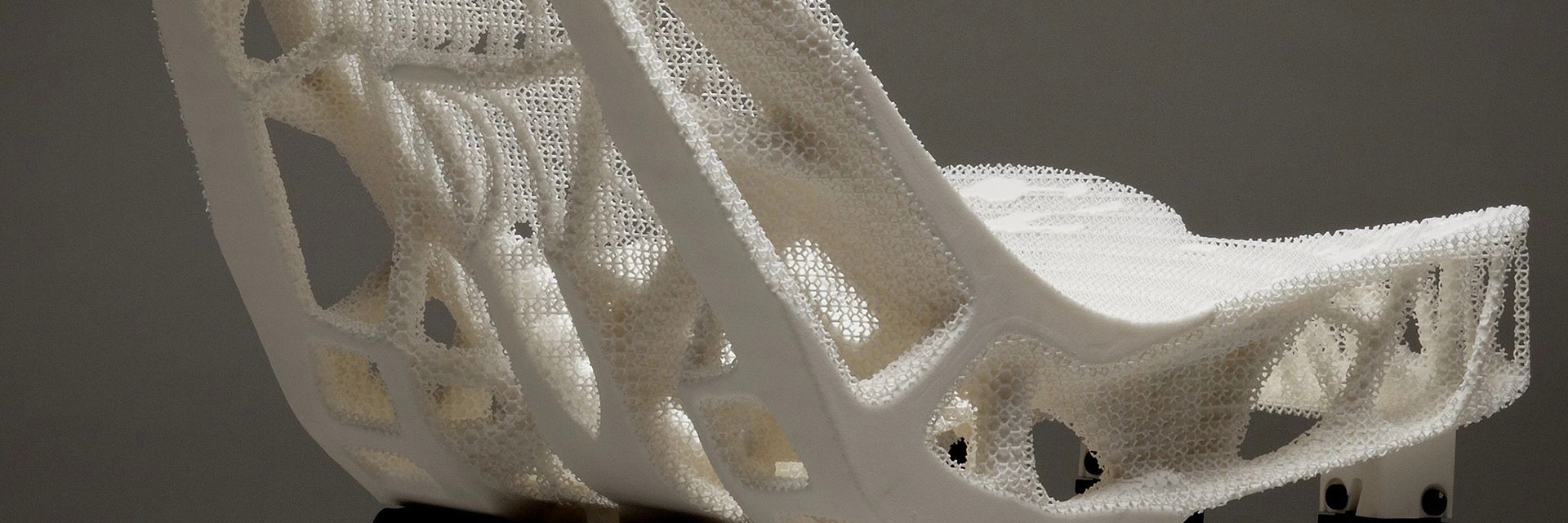CUSTOMER STORY
Toyota's Lightweight Car Seat: A Bionic Design

How do you produce a lightweight car seat prototype with a minimal volume and an optimal heat capacity? What about editing and 3D printing such a large and complex file? Materialise's solid reputation in the automotive industry is built on extensive experience of producing large prototypes. To help Toyota create a lightweight car seat, our software team added new features to our design optimization software 3-matic, and developed a slice-based operations technology which is incorporated into the Build Processor software.


To obtain an optimal design, it is often useful to take a peek at nature. Ages of evolution have formed optimized structures that offer valuable solutions for present-day issues in design and engineering. Toyota’s car seat design was inspired by bone structure, resulting in a gradient topology optimization with high-density and low-density areas, designed with the Materialise Mimics software. The design was then perfected and provided with a pattern in 3-matic, and oriented on the build platform with Magics.


With the design optimised, the next — and main — challenge was to get it printed. Complex designs, with lightweight structures, patterns or textures result in extremely large files that are hard to handle. With the slice-based operations technology of the Materialise Build Processor, the car seat’s file size could be reduced significantly and building it was a piece of cake.
Toyota’s impressive prototype only weighed 7 kg, down from 25 kg, and the heat capacity was reduced from 35.4 to 14.5 J/K. Will they continue using 3D printing? Yes, they will!
Share on:
You might also like
Never miss a story like this. Get curated content delivered straight to your inbox.
